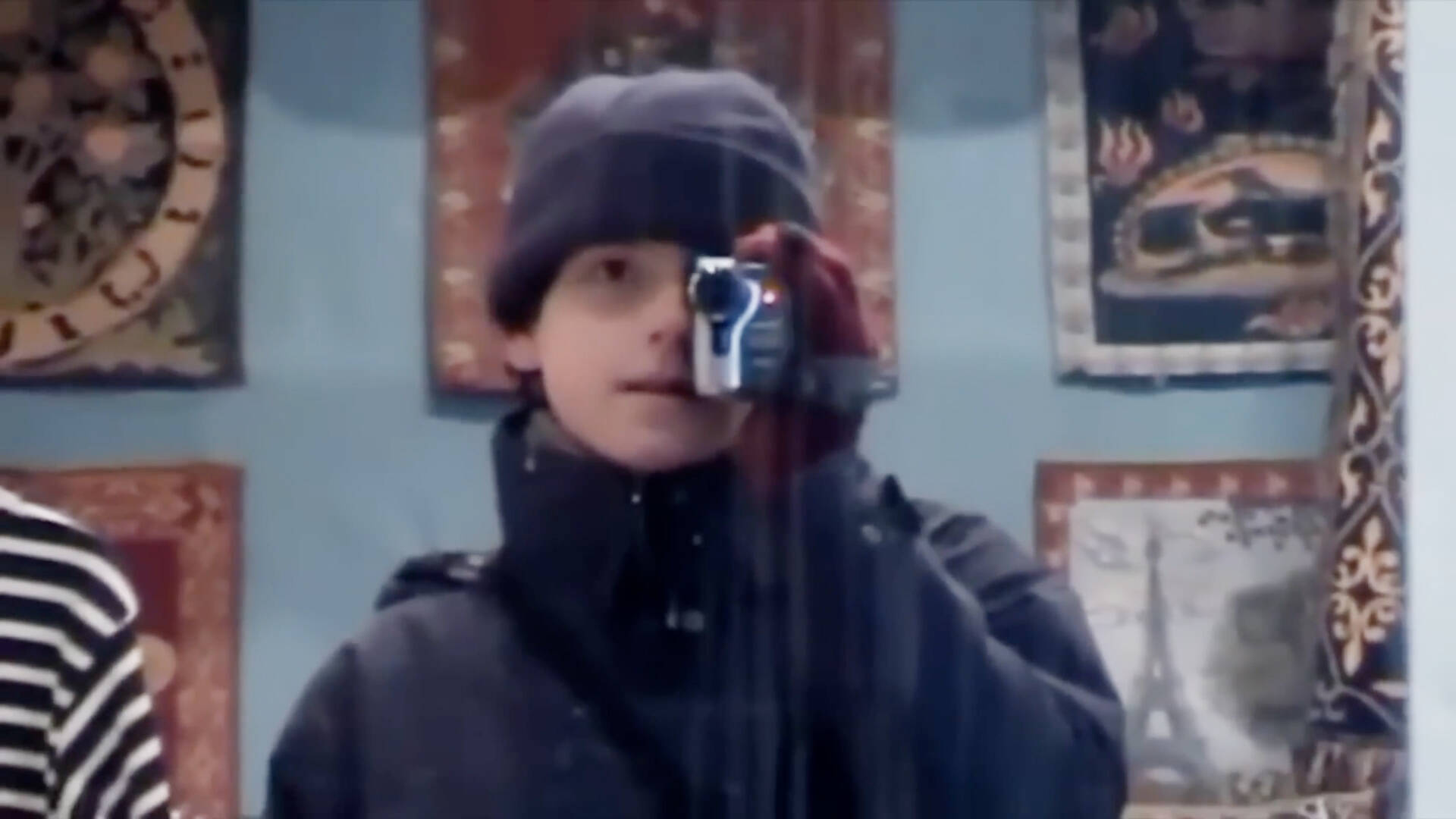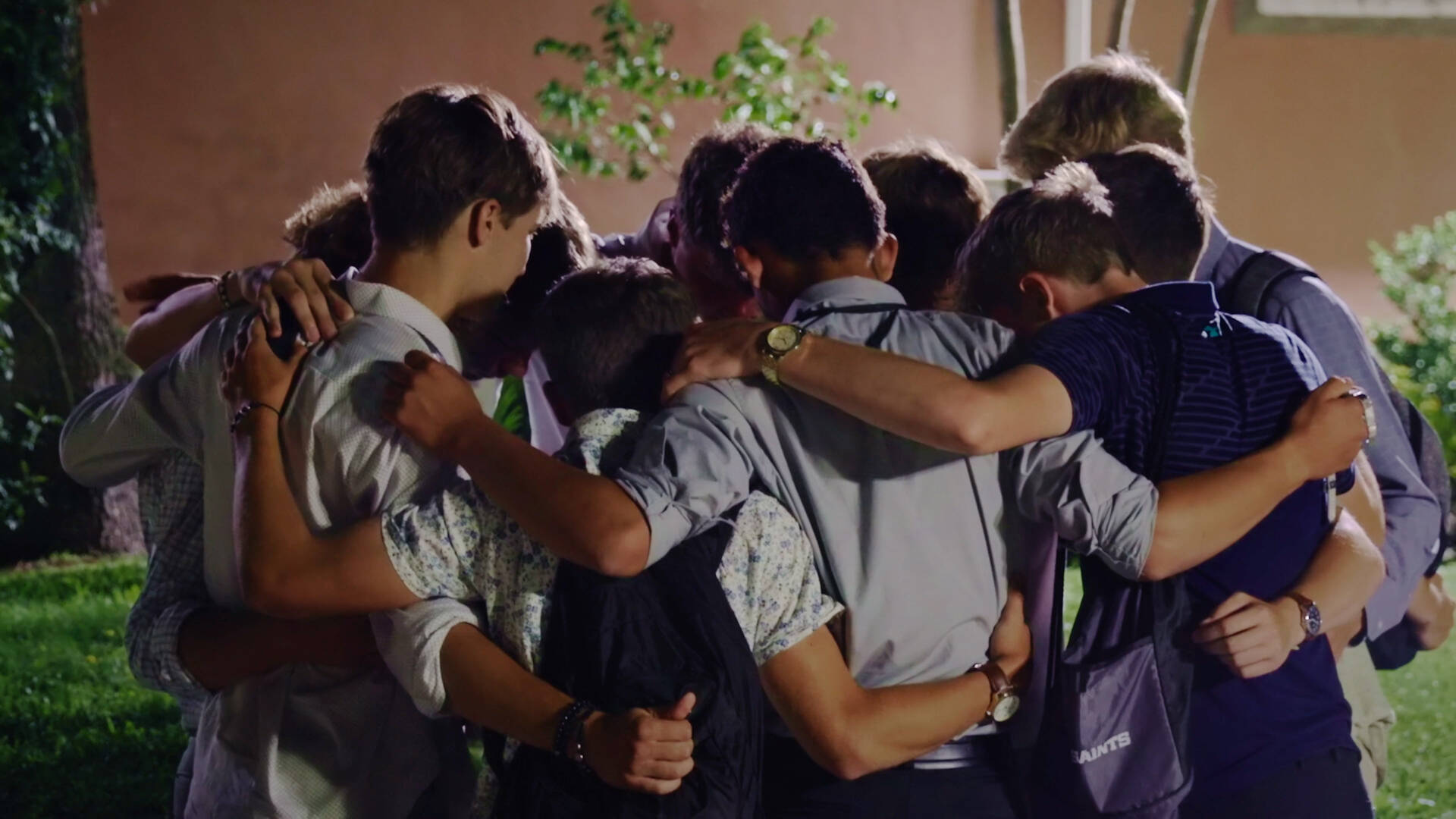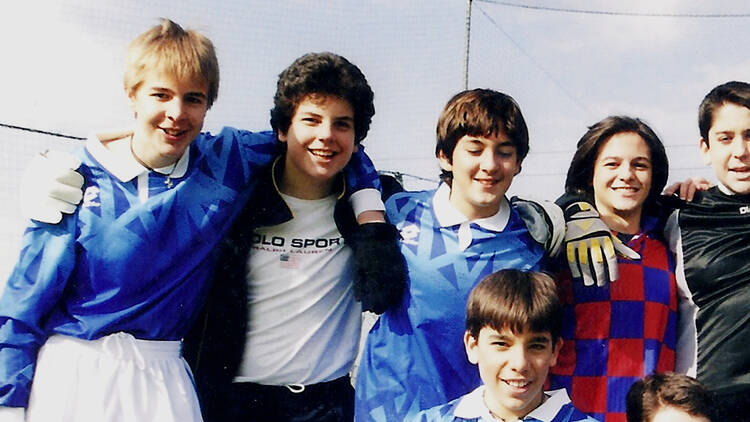In a world of 24/7 digital connection, a startling number of kids and young adults feel more isolated than ever. Gen Z—people roughly between the ages of 12 and 27—report the worst mental health of any generation, according to a recent study by the Gallup and Walton Family Foundation. In 2021, the American Academy of Pediatrics declared the mental health crisis among youth a national emergency, and, according to Pew, nearly half of U.S. teens are online “constantly.” Almost half of U.S. teens have experienced online bullying. One in five have considered suicide.
It’s into this aching landscape that “Carlo Acutis: Roadmap to Reality” speaks—not just as a portrait of a pious teen, but as an attempt to answer a deeper question: Within an age of digital overload and spiritual vacancy, what might a roadmap back to reality look like?
Directed by Tim Moriarty and produced by Castletown Media in collaboration with Jim Wahlberg, the 90-minute documentary begins not in Assisi or Rome, but in a familiar and distinctly modern place: the soft glow of a computer screen in a home office. “Social media, access to digital technology, selfie cameras . . . drive a person to want to present the sheen, the pretty and the shiny, because there’s this comparison game going on,” says Katie Prejean McGrady, host of The Katie McGrady Show on SiriusXM.

McGrady is one of several voices that intersect to tell the story of Carlo Acutis, an Italian teenager and computer whiz who died of leukemia in 2006 at the age of 15. Pope Francis beatified Acutis in Assisi in 2020, making him the first millennial officially on the path to sainthood in the Catholic Church. The film offers a closer look at the legacy of this teenage mystic through interviews with Carlo’s family and friends, as well as insights from Catholic Church leaders and technology experts, all focused on addressing the problem of a generation that has never been more technologically tapped in, yet spiritually tapped out.
Aside from the first-hand recollections of Carlo’s life on earth, a significant portion of the film follows a group of teenagers from North Dakota on a two-week pilgrimage to Rome, Italy, where they visit Carlo’s tomb. During this journey, the students are required to disengage from technology, leaving their phones at home, which allows them to immerse themselves fully in the experience.
“I just kind of want to have fun with my friends. Not really expecting to get a lot out of it, from the religious point of it,” says Mara Nielsen, a teen who will be making the pilgrimage. “But, we’re going to Rome, so might as well sign up.” “I just, I don’t take it seriously,” another student says. The camera pans to a conversation among teens on a bench outside: “Do you ever think of how many hours of your life you waste on your phone?”
Cutting through the mosaic of teens caught mid-scroll is the voice of Monsignor James Shea, President of the University of Mary, who helps to ground the narrative with editorial flair. “There’s a real world out here. They become more human as they become less digital,” he shares. “Carlo’s life, his relatability, can draw people into a contemplation of these great questions about human life and meaning. That is the great promise of Carlo Acutis: If he’s a true saint, he’s an antidote to the ails of our age.”

Born in London in 1991 to Italian parents and raised in Milan, Carlo was, by most outward appearances, an ordinary boy. But we quickly understand that Carlo was not an ordinary boy: By the age of seven, he was asking to attend daily Mass. By 10, he had taught himself to code. At 11, he began building a website cataloging Eucharistic miracles—a meticulous digital archive linking centuries of Catholic mysticism with the democratized infrastructure of the internet. He taught himself to code using textbooks designed for adults and built databases with the quiet precision of a born systems thinker.
“He used the internet,” his mother Antonia Salzano Acutis recalls. “He understood that it was an instrument, that it had a fantastic power, if used well for evangelization.” He believed that technology should serve as a tool to bring people closer to God, not as a distraction. Carlo placed firm limits on screen time, avoided pornography and gossip sites, and frequently warned peers about the spiritual numbness bred by endless scrolling.
Carlo’s life was marked by a profound commitment to the Eucharist, which he referred to as his “highway to heaven.” We’re later shown clips from Carlo’s miracle catalog—stories of bleeding hosts, unexplainable healings, centuries-old altars that glowed in the presence of the faithful. Interviews with theologians and friends attempt to decode this obsession. Even with his sickness, “Carlo saw death differently than most people his age,” says his father Andrea.
As American high school students walk the Assisi streets Carlo once knew, the pace of the film slows. In Rome, the students had attended their own Eucharistic adoration; here, they walk without earbuds. They laugh over dinner. “I just know when I get back, my phone’s gonna be really overwhelming . . . We’ve been to school for 12 years together, and we haven’t had the conversations we’ve had on the trip,” a student says. “Everything feels more genuine.”

A guide points to the glass tomb in the Church of Santa Maria Maggiore: Inside, the body of Carlo Acutis, which the Vatican declared incorrupt, is dressed in Nike sneakers, jeans and a fleece zip-up. “Just to see someone my age, become a saint,” a girl remarks, “I started crying when I saw him.” A boy, wiping tears, tells the camera, “Saints can be the most normal people. It can be the person that just does something with so much love, and so much faith.”
Following a theatrical release in the U.S., “Carlo Acutis: Roadmap to Reality” is now on CREDO, a faith-fueled entertainment platform free for its users worldwide. On the film’s website, there’s a “fact sheet” detailing additional information about the project—and a bullet-point list of statistics on the dangers of the digital revolution.
The digital revolution has left us floating in a liminal space behind our screens, but Carlo offers a counterexample: a teenager who embraced technology not as an escape, but as a tool for communion—with others, and with God. Could it be that this teenage coder, kneeling before the Eucharist in Milan, saw something we’ve forgotten?








